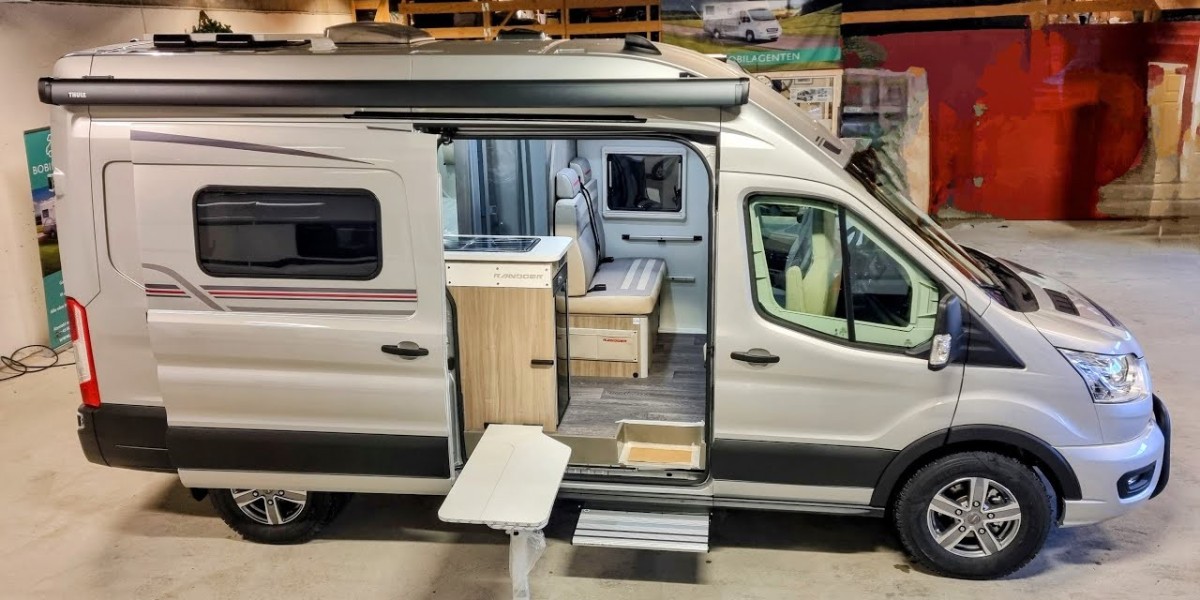Selling a campervan is an exciting yet challenging task. Whether you're upgrading, downsizing, or simply moving away from the campervan lifestyle, it's important to take the right steps to ensure a smooth sale and get the best possible price. Campervans have gained significant popularity in recent years, with many people embracing the freedom and flexibility they offer. However, selling one requires careful planning and attention to detail.
In this comprehensive guide, we will cover everything you need to know about selling a campervan, including preparing it for sale, setting a competitive price, finding potential buyers, and closing the deal.
Why Sell Your Campervan?
Before diving into the process, it’s important to understand why people sell their campervans. Here are a few common reasons:
Upgrading to a Larger or Newer Model: Many campervan owners eventually want to upgrade to a more spacious or newer model with more modern amenities.
Downsizing: Others might choose to sell their larger vehicle and move to a smaller, more maneuverable campervan, especially if their travel habits have changed.
Change in Lifestyle: Sometimes, people sell their campervans due to a shift in lifestyle or personal preferences. They might not be traveling as often or may have found other hobbies that require their attention and finances.
Financial Reasons: Selling a campervan can free up cash for other priorities. It also reduces ongoing costs such as maintenance, insurance, and storage fees.
Limited Use: If your campervan is sitting unused for long periods, it may be better to sell it while it’s still in good condition, rather than letting it depreciate further.
Step 1: Preparing Your Campervan for Sale
Preparing your campervan is crucial to make it attractive to potential buyers. The goal is to present it in the best possible condition and increase its perceived value.
Deep Clean Inside and Out
One of the easiest and most effective ways to boost your campervan’s value is to clean it thoroughly:
Exterior: Wash and wax the exterior, including windows, wheels, and mirrors. If your campervan has any scratches, rust spots, or other cosmetic damage, consider fixing them before listing it for sale.
Interior: Clean and organize the interior of the campervan. Vacuum carpets, wipe down surfaces, and clean all appliances, including the fridge, stove, and sink. Don’t forget to clean the bathroom area, if applicable.
Deodorize: If your campervan has been used for long trips, it might carry some lingering odors from cooking, pets, or dampness. Use air fresheners and dehumidifiers to ensure the space smells fresh.
Fix Mechanical and Cosmetic Issues
Addressing both mechanical and cosmetic issues will increase your campervan’s resale value:
Engine and Transmission: Have a mechanic inspect the engine and transmission to make sure everything is running smoothly. Buyers are more likely to pay a premium if they know the campervan is mechanically sound.
Tires and Brakes: Check the tires for wear and tear and ensure the brakes are functioning properly. Replacing old tires or brake pads can significantly boost your campervan's appeal.
Electrical and Plumbing Systems: Make sure all lights, outlets, and the campervan’s plumbing system are functioning correctly. If you have a solar power system or water heater, ensure they’re in good working order as well.
Appliances: Ensure that appliances, such as the stove, refrigerator, and air conditioning units, are all functioning properly. If any repairs are needed, consider having them fixed before listing the campervan.
Organize Paperwork
Potential buyers will want to see documentation related to the campervan’s history. Gather the following documents to present to interested buyers:
Maintenance Records: Keep records of all regular maintenance and repairs. This reassures buyers that the campervan has been well cared for.
Owner’s Manual: Include the campervan’s manual, along with any instructions for specific appliances or systems.
Warranty Information: If your campervan is still under warranty, having the warranty details can increase its appeal.
Title and Registration: Ensure the title is clear and the registration is up to date. This is important for a smooth and legally compliant transaction.
Step 2: Pricing Your Campervan
Setting the right price is key to selling your campervan quickly and for a fair return. Here’s how to determine a competitive price:
Research the Market
Start by researching campervans similar to yours that are currently for sale. Consider the following factors:
Make and Model: Campervans from well-known manufacturers like Volkswagen, Ford, Mercedes-Benz, and Winnebago tend to retain their value better than lesser-known brands.
Year of Manufacture: Newer models will generally fetch a higher price than older ones, but a well-maintained older campervan can still command a good price.
Mileage: Campervans with lower mileage tend to sell for more. However, since campervans are built for long-distance travel, buyers expect some mileage.
Condition: The condition of the campervan is a huge factor in determining price. A well-maintained campervan with no significant issues will always be more appealing to buyers.
Consider Depreciation
Like most vehicles, campervans depreciate over time. It’s important to account for this depreciation when setting your asking price. However, campervans often depreciate more slowly than regular cars because of their specialized use.
Factor in Upgrades and Extras
If you’ve invested in significant upgrades, such as installing solar panels, new batteries, upgraded plumbing or electrical systems, or a modern kitchen, make sure to factor these into your price. However, keep in mind that buyers may not be willing to pay for upgrades that don’t fit their needs.
Use Online Pricing Guides
You can use resources like NADA Guides or RV Trader to get an estimate of your campervan’s value based on its make, model, year, and condition.
Step 3: Advertising and Listing Your Campervan
Once your campervan is cleaned, repaired, and priced, it’s time to list it for sale. Here are some tips for creating an effective listing:
Take High-Quality Photos
High-quality photos are essential to make your campervan stand out online. Include:
Exterior Shots: Take photos of the campervan’s front, back, and sides. Make sure it’s clean and in good lighting.
Interior Shots: Show all areas of the interior, including the kitchen, sleeping area, and bathroom. Highlight unique features like custom storage, high-quality finishes, or upgraded appliances.
Detail Shots: Take close-up shots of any upgrades or features that set your campervan apart from others on the market.
Write an Engaging Description
A well-written description can make a big difference in attracting buyers. Be detailed but concise, and highlight the key features of your campervan. Include:
Basic Information: The make, model, year, mileage, and any notable specifications (e.g., engine type, fuel type, etc.).
Features and Upgrades: List any upgrades, such as solar panels, a new battery, or a modern kitchen.
Condition: Be honest about the campervan’s condition. If there are any issues, mention them upfront to avoid surprises later.
Reason for Selling: Briefly explain why you’re selling the campervan. This can help build trust with potential buyers.
Where to Advertise
There are several platforms where you can list your campervan for sale:
RV-Specific Websites: Sites like RV Trader, Campervan Finder, and GoRVing.com are popular among people looking for campervans and RVs.
Classifieds and Marketplaces: Craigslist and Facebook Marketplace are good options for reaching local buyers.
Social Media: Share your listing on social media platforms, including Facebook groups for campervan and RV enthusiasts.
Forums and Communities: Campervan and RV forums can be great places to advertise, as you’ll reach an audience specifically interested in this type of vehicle.
Step 4: Negotiating and Closing the Sale
Once you start receiving inquiries, you’ll need to handle negotiations and finalize the sale.
Be Ready to Negotiate
Buyers will likely try to negotiate the price. Be flexible, but know your bottom line. Be prepared to justify your asking price based on the campervan’s condition, mileage, and upgrades.
Payment Options
For private sales, it’s important to use secure payment methods, such as cashier’s checks or bank transfers. Avoid accepting personal checks or online payments from unknown buyers to protect against fraud.
Transfer the Title
Once a price is agreed upon, you’ll need to transfer the title to the new owner. Make sure all paperwork is completed properly to avoid any legal issues down the line.
Provide the Documentation
Give the buyer all relevant documentation, including the maintenance records, warranty information, and the owner’s manual.
Conclusion
Selling a campervan can be a smooth and profitable process with the right approach. By preparing your vehicle, setting a competitive price, advertising effectively, and handling negotiations professionally, you can maximize your return and ensure a successful sale. Whether you’re upgrading to a new vehicle, moving on to a different adventure, or simply cashing in on your investment, selling a campervan opens the door to new possibilities.









